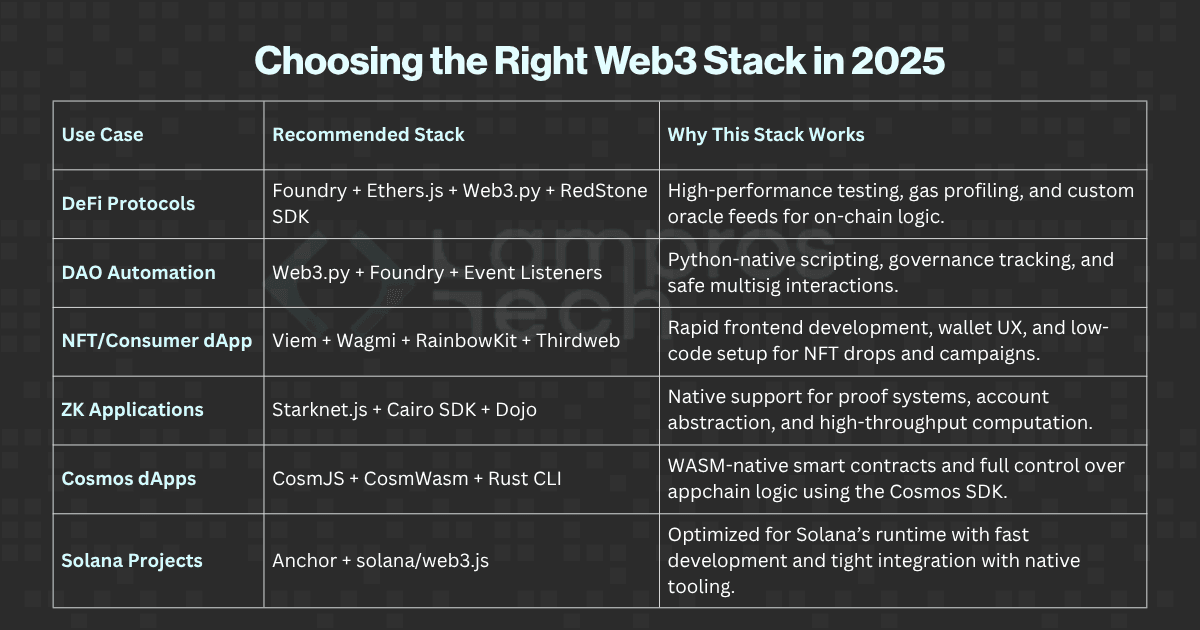Contact Us
If you're working on something real — let's talk.
Development & Integration
Blockchain Infrastructure & Tools
Ecosystem Growth & Support
© 2025 Lampros Tech. All Rights Reserved.
Published On Aug 04, 2025
Updated On Aug 04, 2025


Execution Layer | Best-Fit Libraries & Frameworks |
|---|---|
EVM (Ethereum, L2s like Base/OP/Arbitrum) | Ethers.js, Viem, Foundry, Hardhat, Wagmi |
ZK-Rollups (Starknet, zkSync Era) | Starknet.js, Cairo SDKs, Dojo |
Cosmos / WASM | CosmJS, CosmWasm CLI, Rust SDKs |
Solana | solana/web3.js, Anchor, Seahorse |
Ecosystem | Recommended Stack |
|---|---|
Optimism Superchain | Viem, Foundry, OP CLI, Wagmi |
Polygon zkEVM / CDK | Hardhat, Thirdweb, Viem |
Starknet | Cairo SDKs, Starknet.js, Dojo |
Cosmos | CosmJS, CosmWasm, Ignite CLI |
Use Case | Suggested Stack | Why It Works |
|---|---|---|
NFT platform or gamified UX | Wagmi + Viem + RainbowKit + Thirdweb | Quick setup, frontend-first, wallet native |
DAO treasury automation | Web3.py + Foundry + event listeners | Backend-heavy with scripting flexibility |
Lending/DeFi protocol | Foundry + Ethers.js + RedStone SDK | Performance, test coverage, custom logic |
ZK-enabled app | Starknet.js + Cairo SDK | Privacy, scalability, provable computation |
FAQs

Viem, Ethers.js, Web3.py, and Starknet.js lead the way for typed, performant, and chain-specific development.

Foundry is the top choice for audit-ready Solidity development with fuzz testing, cheat codes, and fast CI pipelines.

Viem offers modular, TypeScript-native APIs and better frontend integration. Ethers.js is stable and ideal for legacy or full-stack EVM apps.

AI tools help with test generation, gas profiling, exploit detection, and prompt-based scripting for smart contracts and bots.

The biggest trends include typed & simulated workflows, full-stack abstractions, AI agents, multichain SDKs, and verifiable automation via AVS platforms.